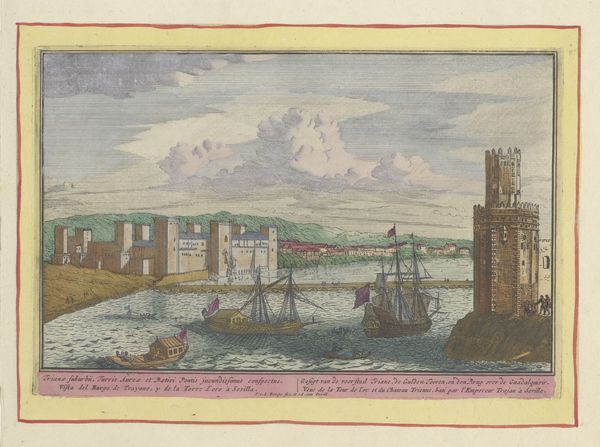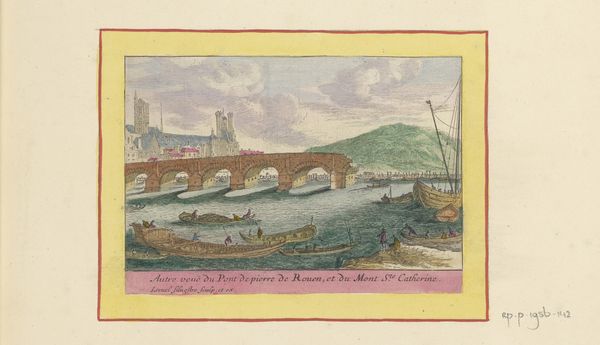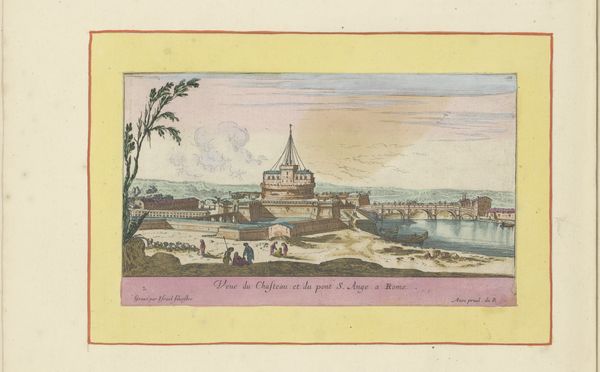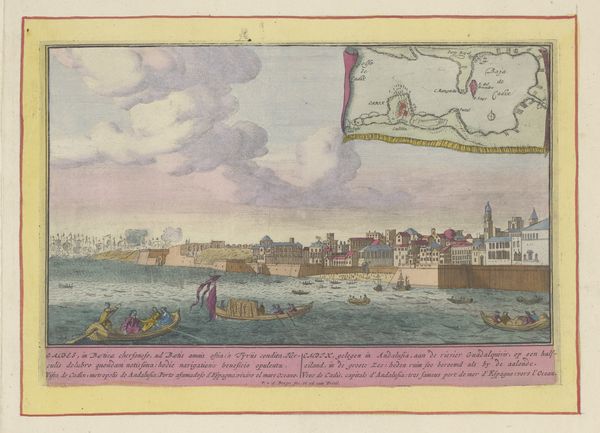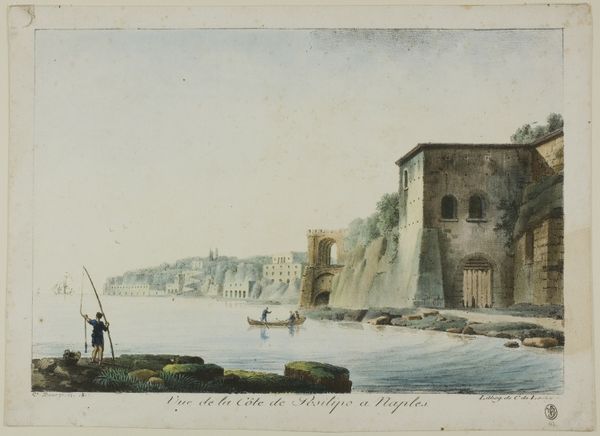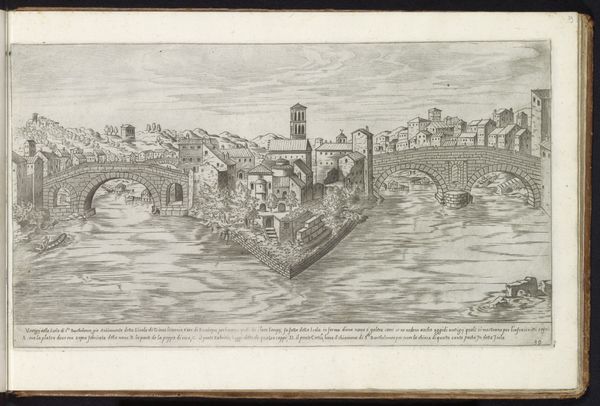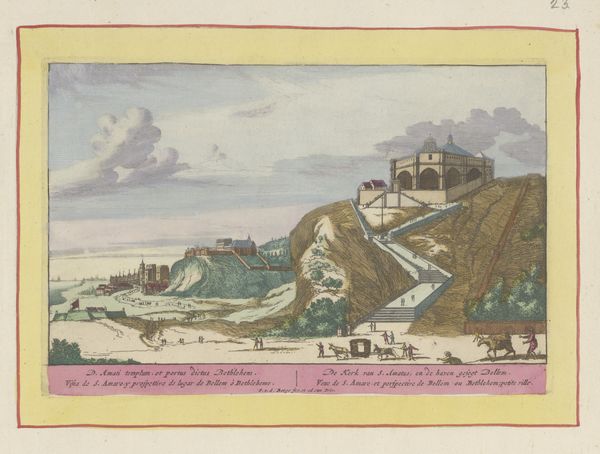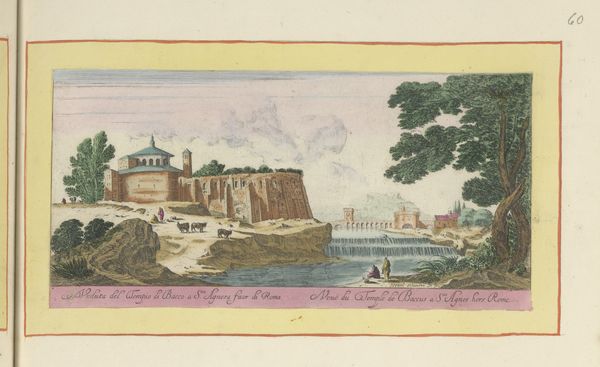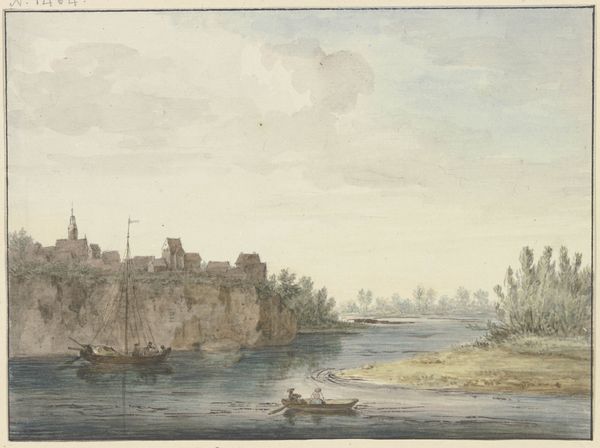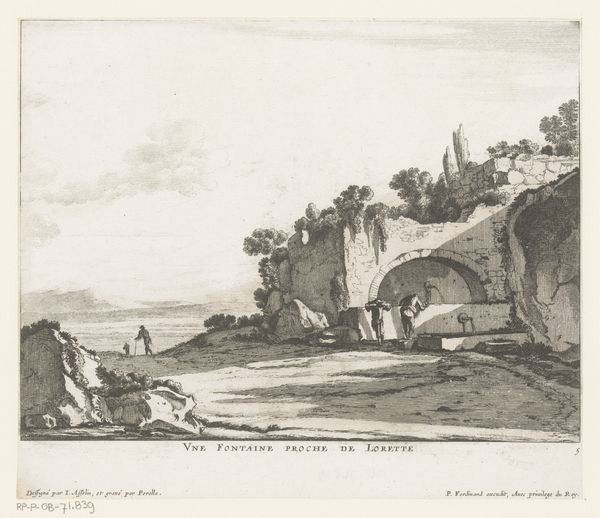
drawing, print, etching
#
drawing
#
baroque
# print
#
etching
#
landscape
#
cityscape
#
realism
Dimensions: height 106 mm, width 152 mm, height 532 mm, width 320 mm
Copyright: Rijks Museum: Open Domain
Curator: Here we have Israel Silvestre’s “View of a Bridge over the Seine in Rouen,” which experts believe he produced sometime before 1664. It’s an etching, a print made using careful applications of acid to incise the image. Editor: The print has a certain delicate, melancholy charm. Look at the fractured bridge, and the quiet activity by the river. It almost feels like a stage set, perfectly arranged. Curator: That sense of staged artifice connects, I think, with a broader visual language. The crumbling bridge acts as a memento mori, a common theme during the Baroque era— a reminder of the fleeting nature of earthly structures and human existence. Editor: It’s also a document, isn’t it? Etchings like this served a practical function, recording the fabric of the city, its infrastructure, its waterways. The etching captures labor happening on the river’s edge. I wonder who those figures were. Curator: Certainly. Consider the bridge itself—it’s rendered not just as stone and mortar but also as an enduring symbol of human engineering, now bearing visible scars. These ruins tell of past wars or natural disasters—stories embedded in stone. Editor: I’m curious about Silvestre's process. Etching allows for these very fine, detailed lines. But how long did it take him? Did he draw it from life, or from an earlier sketch? How were these prints circulated? Each one tells a story about not just the place, but also the material means of representing it. Curator: He captures Rouen's atmosphere with economy—a skill perfected by artists then. This image creates echoes. And you look back into history, wondering how the architecture impacts people. Editor: Exactly! The architecture isn't abstract—it defines daily life, enabling trade and shaping experiences of the city for ordinary folks and for travelers. Silvestre’s print then opens up complex layers of past Rouen history. Curator: Yes. A conversation in every mark and crumbling facade. Thank you for taking that material approach. Editor: It’s a history we continue to carry within ourselves, materially changed from the image, but similar, yet again.
Comments
No comments
Be the first to comment and join the conversation on the ultimate creative platform.
